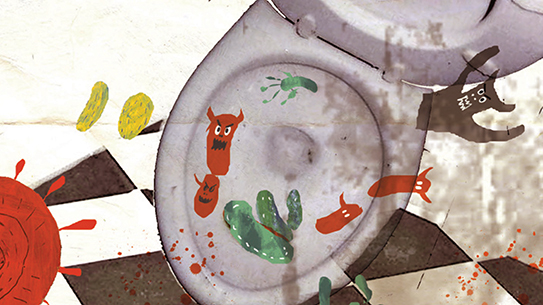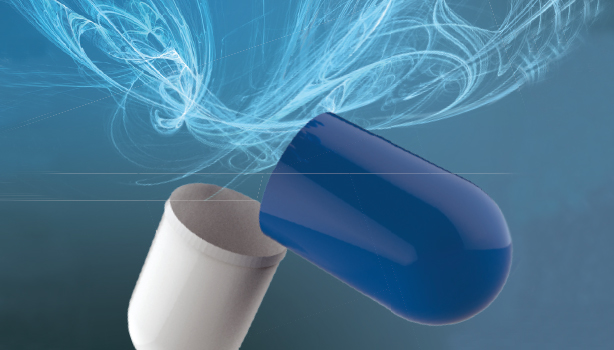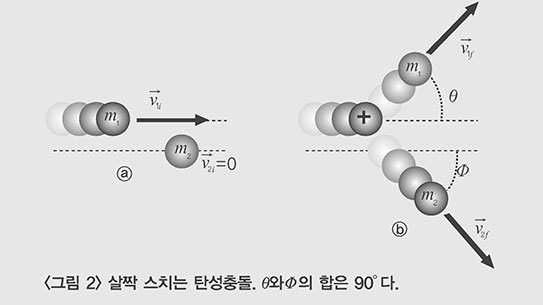
과학소설 작가들은 무시무시하고 복잡하며 때로는 악독한 외계인들을 생각해낸다. 그러나 정말로 아주 악독하며, 소설을 능가할 정도로 복잡한 생명 주기를 가지는 생명체가 존재하고 있다. 그것은 말라리아를 일으키는 균이다. 말라리아는 인체에 위험하고 갈수록 증가추세에 있으며 아직도 완전히 치료되지 못하고 있다.
말라리아균은 포자를 생성하는 단세포 기생 유기체인 포자충이라 불리는 원생동물 강(綱)에 속한다. 포자충이 생존하기 위해서는 인간과 수많은 종류의 말라리아 모기를 필요로 한다. 대부분의 말라리아 모기는 따뜻한 기후를 선호한다. 따라서 전 지구적 온난화 추세와 더불어 필연적으로 그 모기들은 퍼져나갈 것이다.
말라리아를 일으키는 모기는 암컷인데, 알을 까기 전에 식량으로서 충분한 피를 필요로 한다. 모기가 말라리아에 걸린 사람의 적혈구를 빨아들일 때 그 적혈구들 속에는 기생충 생명주기 중 생식단계의 시작을 기다리는 생식 모세포가 포함돼 있다.
그 모기의 내장에서는 정세포와 난세포로 이루어진 생식세포로부터 생식 모세포가 생성된다. 그리고 이들이 서로 결합하여 포자충이 되는 단계를 거쳐 접합자를 형성하고, 이들 생식세포는 모기의 침샘으로 이동하며 모기들이 배가 고파질 때를 기다린다.
그 모기의 침이 다음 사람의 피부를 뚫고 들어갈 때, 종충들은 인간의 혈류 안으로 침투한다. 이어 이 종충들은 간으로 이동되고, 그곳에서 무성생식으로 증식한다. 약 일주일 후에 기생충들은 간에서 다음 단계인 낭충으로 탈바꿈하고, 이 낭충이 적혈구세포에 침입한다. 더 많은 무성생식이 일어나고 기생충들은 계속 다른 적혈구 세포들에 침입하게 된다. 이 때마다 환자는 발열과 오한을 일으킨다.
이렇게 감염된 적혈구들이 모세 혈관벽에 들러붙기도 하는데, 이로 인해 세포들이 크게 손상을 입는다. 특히 뇌와 콩팥의 조직세포들이 심한 피해를 당한다. 그러나 최근들어 언젠가는 이 과정을 예방할 수 있다는 희망이 생겨나고 있다. 미국 워싱턴 대학의 세포 생물학자들은 기생충들이 적혈구 내에서 영양분을 섭취할 때에는 특정한 경로를 만들어낸다는 사실을 발견했다.
연구원들은 이 경로들을 차단하여 기생충들을 아사시킬 수 있는 방법을 찾아내려 하고 있다.
일부 기생충들은 침투한 인체 적혈구 세포내에서 생식 모세포로 변형되어 다음에 사람이 모기에 물리게 되는 때를 준비하고 있다. 불행하게도 이 극도로 복잡한 생명 주기는 너무도 완벽하게 돌아간다. 제2차 세계대전이 끝난 후에 사람들은 새로운 약과 살충제에 의해 말라리아가 박멸되었을 것이라고 생각했다. 그러나 살충제에 대한 모기의 저항력과 약에 대한 기생충의 저항력도 커졌다.
말라리아 기생충에는 4종류가 있는데, 그 중 프라스모디엄 팔시패럼이라 불리는 한 종류가 말라리아로 인한 대부분의 사망 원인이 된다. 다른 종류들은 사람을 쇠약하게 하거나 경우에 따라 치명적일 수도 있다. 이들은 또 초기 감염 이후 여러 해 동안 인체에 잠복해 있다가 재발하기도 한다.
최근의 통계는 끔찍하다. 1년에 발생하는 말라리아 환자가 1억명 이상이고 보균자는 약 3억명 정도이며, 사망자만 해도 2백만명 이상이다. 비교적 말라리아의 위험이 없는 나라에 살고 있는 수백만의 사람들이 말라리아에 시달리는 나라를 예방책 등 적절한 지식도 없이 여행한다.
여행객들은 가장 위험한 장소가 어디이며, 어떤 예방약을 먹어야 하는지 등에 관한 조언을 전염병 전문가로부터 구해야 할 것이다. 예방약은 여행을 떠나기 1주일 내지 2주일 전부터 먹고, 돌아와서는 4주일 동안 계속 복용해야 한다. 말라리아의 위협을 받는 지역에서는 긴소매 옷과 바지를 입고 바르는 모기약을 사용해야 하며, 살충제에 담근 모기장을 둘러치고 자야 한다(암컷 모기는 밤에 피를 빨아 먹는다).
현재 과학자들은 기생충 생명주기의 복잡한 생화학적 특징에 대해 더 많이 이해하고 있으며, 여러 단계에서 기생충들을 공격하거나 차단하는 약들을 개발하기 위해 노력하고 있다. 이에 관한 뉴스 중 눈에 띄는 것은 SPF66 이라 불리는 백신에 관한 것이다. 이는 마누엘 엘킨 페타로요 박사가 이끄는 콜럼비아 연구진에 의해 개발되었다. 이 백신에 함유된 합성 단백질들은 프라스모디엄 팔시패럼들의 표면 구조를 모방하여 질병에 저항하는 인간의 면역 시스템을 자극한다. 현재까지 이 백신은 자원자 중에서 특히 어린이 환자들의 임상례를 감소시켰다.
중국인들에 의해 수세기 동안 사용되어 온 칭하오라고 불리는 약초도 연구되고 있다. 이 식물은 아르테미시아 아누아라는 이름을 가진 향기로운 쑥이다. 이것으로부터 항 말라리아 아르테미시안을 추출할 수 있다.
합성 아르테미시안도 만들어졌으나 자연산만큼 비싸며 구하기도 어렵다. 좀더 구하기 쉽고 값싸며 강력한 합성아르테미시안을 만들어내기 위해, 과학자들은 아르테미시안 유도제를 연구하고 있다.
말라리아에 대항하는 새로운 무기는 기생충의 유전자 설계도를 추적하고 있는 연구진이 만들어낼지도 모른다. 말라리아의 유전자들이 완전히 알려지기까지는 많은 시간이 소요되고 자금도 바닥날수 있겠지만, 결국은 더 나은 백신이 개발될 수 있을 것이다.
말라리아는 더 이상 또 다른 열대성 질병의 하나가 아니다. 그것은 세계를 포위하고 있으며 우리는 말라리아와 싸워야만 한다. 플로리다 대학, 말라리아 유전자 프로젝트의 책임자인 쉘돈 슈스터의 말처럼 "효율적으로 적을 공격하기 위해서는 적에 대해서 알 필요가 있다."
Science fiction writers think up weird, complicated and frequently wicked aliens, yet there's a real creature so villainous and with such a complicated life cycle that it outdoes fiction. It causes malaria-dangerous, increasing and not yet genuinely curable.
The malaria villain belongs to the class of protozoa called sporozoa, one-celled parasitic organisms that form spores. To survive, the malaria sporozoa needs both humans and any of the many different kinds of anopheles mosquito. Most anopheles mosquitos perfer rather warm climates, so with the trend toward global warming, the mosquito will inevitably spread.
The mosquito is female, needing a hearty meal of blood before she can lay her eggs. If she takes in a malaria victim's red blood cells, they contain malaria gametocytes waiting to start the sexual part of the parasite's life cycle. In the mosquito's gut, gametes("male" and "female" cells) emerge from the gametocytes, join and form zygotes that go through stages to become sporozoites, which migrate to the salivary glands and wait for the mosquito to get hungry.
The next puncture of a human's skin puts the sporozoites into the human bloodstream. They are carried to the liver, where they reproduce asexually. After a week or more, the parasites emerge from the liver in their next form, called merozoites, which invade red blood cells. More asexual replication occurs, with parasites breaking out to invade other red blood cells. Each time they do this, the patient has fever and shaking chills.
These infected red blood cells may stick to the walls of small blood vessels. The resulting blockage damages tissues, especially the brain and kidneys, but there's now hope of someday preventing this. Recently cell biologists at Washington University, St. Louis, in the United States, have found that when inside red blood cells, the parasites develop special channels for taking in nutrients. Researchers expect to find ways of blocking these channels and starving the parasite.
In an infected human's red blood sells, some parasites transform themselves into gametocytes-in preparation for the next time said human is bitten by a mosquito. This extremely complicated life cycle unfortunately works all too well. After World War II people thought malaria would be licked with new drugs and insecticides, but resistance grew-the mosquito's for insecticides, and the parasite's for medicine.
There are four different kinds of malaria parasites, but the one called plasmodium falciparum is responsible for most of the deaths. The others are debilitating, can be fatal, and can also lie dormant in the body, with the possibility of recurring years after the initial infection.
The current statistics are appalling-over 100 million patients, almost 300 million infected people, and over 2 million deaths per year from malaria. Millions of tourists from countries relatively free of malaria visit malaria-ridden countries, often without adequate knowledge of prevention. They come home infected and some of them die.
Travelers should consult an infectious disease expert about which places are the riskiest, and which preventive medicines should be taken-starting a week or two before the trip, and continuing for four weeks after returning. In a malarial region, wear long sleeves and pants, use insect repellent and sleep in a bed surrounded by insecticide-dipped mosquito netting (the female mosquito feeds at night).
Scientists now understand more about the complicated biochemistry of the parasite's life cycle, and are trying out drugs that attack or block the parasite at various stages. Most in the news is the vaccine called SPF66, developed by Colombian researchers headed by Manuel Elkin Patarroyo, M.D. The synthetic proteins in this vaccine imitate those from the surface of P. falciparum and stimulate the human immune system against it So fer, this vaccine has decreased the number of clinical cases in volunteers, especially in children.
Under investigation is a medicinal herb used for centuries by the Chinese, who call it quinghao. The plant is Artemisia annua, sweet wormwood, from which the antimalarial artemisian can be extracted. Synthetic artemisian has been made, but like the natural product, is expensive and difficult to get. To provide a more readily obtainable, cheaper and more powerful compound, scientists are now working on simpler derivatives of the synthetic artemisian.
New weapons against malaria may come from researchers now mapping all the parasite's genes. Eventually a better vaccine may be produced, although it will be years before the malaria genome is completely understood (and funding is running out).
Malaria is no longer just another tropical disease. It encompasses the world and must be fought. But as Sheldon M. Schuster, head of the Malaria Genome Project at the University of Florida says, "You need to know the enemy in order to attack it effectively."
(c) 1993, Los Angeles Times Syndicate

















